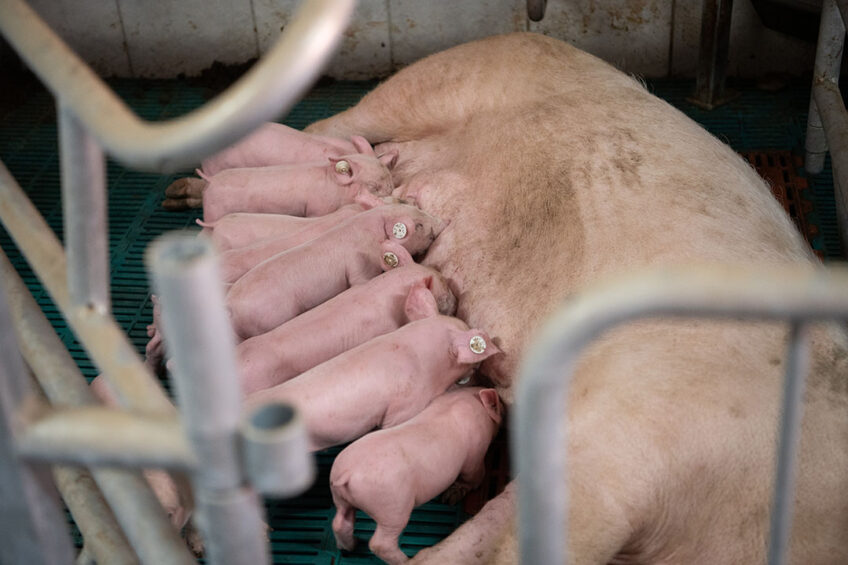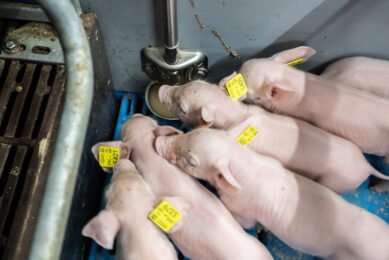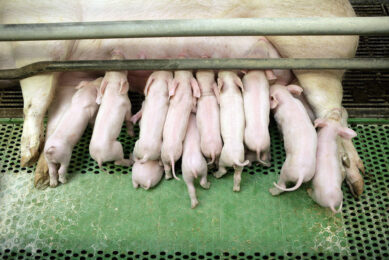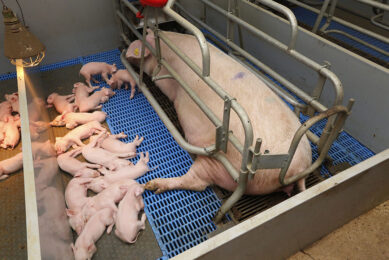New insights into solving sow mortality

Solving the problem of increasing sow mortality in the US swine industry is complex, not in the least since many factors play a role. Dr. Mark Knauer of North Carolina State University concluded recently that at least 1 corresponding factor to mortality might be be ruled out.
According to Dr. Knauer, in cases where farms have an excellent labour force and limited feeding competition in gestation, poor structural conformation is not strongly associated with death. Knauer and his colleagues base this conclusion on a recent study of only 1 farm: a 2,600 head commercial sow farm in eastern North Carolina, with highly-trained staff, which they observed over 27 weeks.
In late gestation, the research team avluated sows for abnormalities (structural conformation, overgrown toes and dew claws, perineal swelling, behaviour, etc.). Farm-recorded sow mortality codes included a difficult farrow (7%), lameness (32%), prolapse (21%) and unknown (40%). Of the 3,340 sows evaluated, 190 (5.7%) died between day 95 of gestation and 30 days post-farrow.
Good stockmanship and proper structural conformation are still very important, there may be other, more important factors driving sow deaths
Perineal swelling was related to several sow mortality codes. Long toes and dew claws however did not have a high association with sow mortality. None of the sows with poor structural conformation had died by day 30 post-farrow.
Knauer says these results have challenged his paradigm that structural conformation is a strong factor in sow mortality, and he notes that “while good stockmanship and proper structural conformation are still very important, there may be other, more important factors driving sow deaths.”
Technology and standardisation
Dr. Clayton Johnson, a veterinarian at Carthage Veterinary Service in Illinois, thinks that there is much room to improve stockmanship with relation to cutting sow deaths – through the use of new software-sensor systems.
Johnson made these observations when in a recent Swine Technologies interview. This company marketed an alert system for farm workers to quickly intervene in piglet crushing situations. The system works with sensing piglet squeals. He noted that a similar alert system would be very useful to prevent sow death.
Automated sensor system
That is, a sensor and software system that monitors and flags sow behaviour that likely indicates poor health would enable farm workers to act fast and hopefully prevent many deaths. He points, for example, to a sow that does not get up for a long period. An automated sensor system ‘notices’ this and reports it, whereas farm workers could easily mis this situation.
Standardisation of ‘reason codes’ for mortality
Johnson also notes that researchers and the swine industry could better understand sow mortality if there was standardisation of ‘reason codes’ for mortality. Right now, use of codes varies from farm to farm and this lack of objective and reliable classification of the causes of sow death makes it difficult to study trends, analyze data and come up with solutions.











